We recently learned a bit more about invasion and counter-invasion tactics. Our lesson started on the day of our return from Lisbon. We left for the Lisbon airport at 10h00 and arrived home in Paris apres 18h00. Quelle journee! Ugh.
It seems that the French deployed an army union to strike back at unwanted forces. They have been found to be an effective deterrent against invading hoards. When the armies of transportation union strike, flights and trains and all manner of oxen and donkey cart travel grinds to a halt. No one comes in. No one leaves. As in the best Monty Python skits, the tactic appears to be that without efficient transportation into a country, invasions can be thwarted and invading tourist armies simply give up and wander off in some other direction.
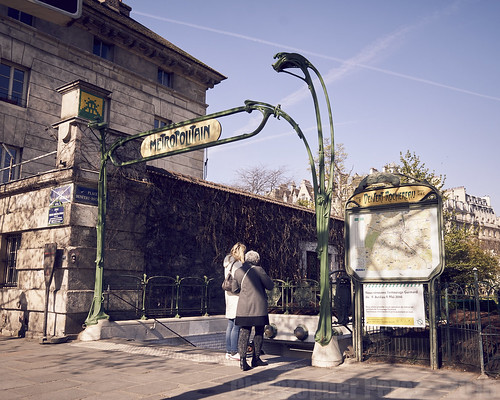
As you are no doubt aware, Europe is rich in histories of invasion/counter-invasion.
Take the Northmen, for instance. For hundreds of years boats loaded with armies from the north sailed and floated and swam toward Paris. Already famous the (old) world over for it's wine, women, and song, Paris was a somewhat attractive tourist destination. For hundreds of years, the Vikings visited and toured (or as the French would say; raped, plundered, and pillaged) the Christian monastery of Saint Germain situated just outside the massive fortified Paris village walls.
When the Northmen/Normans/Normands (depending on the written language) finished their visit of Parisian monasteries, they settled in a city called Rouen which is a broad region that would much later be called Normandy (who dreams up these names?). There they built their own Christian religious structures, including churches, pubs, and a few homes.
We were there once with friends from England to verify the current state of a family plot. Rouen, as readers will easily remember, was the seat of Northmen/Norman/Normand Power and is where Jude's great-great-great... grand-dad is buried. His is the natty little resting place found just behind the altar. So strong were these religious edifices that it took repeated American air-strikes to bring down just the cathedral bell tower. The Americans, it seems, were short of Jude's great-great-great... grand-dad Peppin Bref's tomb by hundreds of meters.
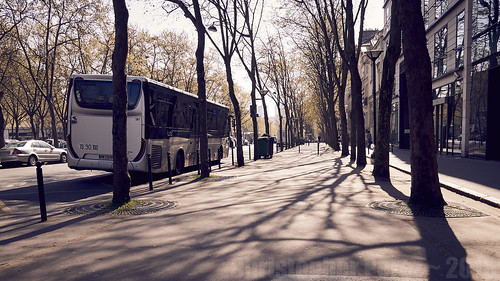
So it was with a sense of deep familial pride that we were found immersing ourselves into Yet Another Experience of a Lifetime. Paris, of all places, is home to a Viking Museum of Invasion History.
The Immersive Experience began by emulating the Northmen's spirit of boating tourist adventure. We navigated a bus toward the museum. It was easy to feel the Spirit of Adventure and to envision strong, tall, flaxen haired maidens passing down rows of strong, tall, flaxen haired gentlemen while dispensing Strong Drink to help weather the long voyage. The tradition holds, even today, where Stewards and Stewardesses pass amongst aircraft-swaddled passengers dispensing Weak Drink (yes, it seems that history has been watered down in more than one way).
We could see why the Vikings liked to travel. Our destination was a Glorious Museum. It was built strong, tall, and had painted blue (which signifies the seas they crossed in Olden Tymes) and swaths of yellow (which no-doubt emulates the flaxen haired-ness of the people who's lives the museum celebrates).
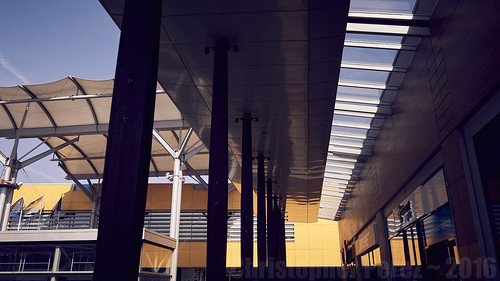
I will keep any description of the museum itself to a bare minimum so as to not disclose some of the surprising, wonderful discoveries found therein. But to give readers of taste of the complex, rich, nuanced historic details to be unearthed I feel the need to share two things.
The First Minor Sharing I'd like to make involves fish. Even under-educated, dare I say disinterested, readers of Viking history will recall that ravens used to follow Northmen wherever they went. Ravens were taken as a sign that the God Odin loved them and would treat them well. Odin and his ravens pointed the way to Paris wine, Paris women, and Paris song. So he's not a Bad God to have on one's side and the Northmen loved him dearly.
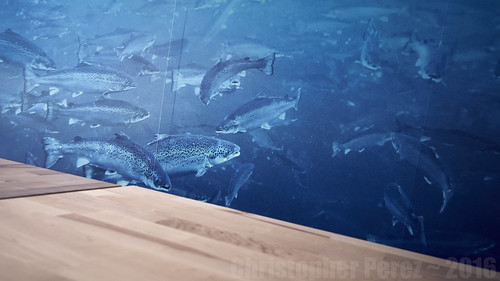
What we didn't know was that salmon also followed the Northmen on their journeys. This is why paintings of schools of salmon could be found as a backdrop to a particularly interesting diorama. While I don't recall the name of the God of Salmon, we learned that His influence is worldwide. These Great Fish were believed to follow the Vikings wherever they sailed. Even today salmon revered in countries as far away as Japan. It is there that salmon is a Most Important Partner to rice and is called Sushi. In Rouen, Normandy we call it Salmon Dinner.
The Second Minor Sharing I'd like to make involves light. You see, the Northmen liked to travel at night, or so said the plaque next to a display. It seems they needed a way to, well, Find Their Way without making a tangled flaxen-haired black-feathered mess when they collided with their all black as the darkest night and closely following raven pets. For hundreds of years no one could see a thing and made frustratingly slow progress.
A most significant Pride of the North has got to be the development of Beautiful Lighting Structures that ward off the after sun-down darkness. The shape and form of each structure is incredible. The creativity and artfulness has to be seen to be believed. Each shape, each nuance mean something. Each detail refers back to Something Really Important in their system of beliefs. The Northmen Called it Good - Yea Oden! We can See the Light!! And make our way to Paris!!! While avoiding the erratic flights of Our Raven Pets!!! Today we call them lamps.
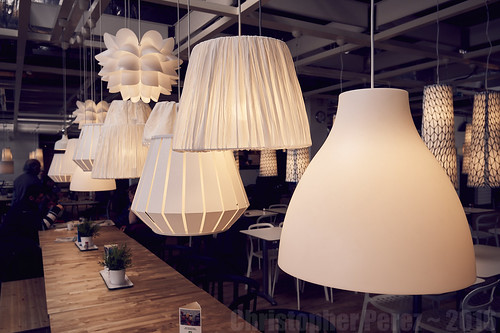
All museums seem to have their Gift Shops and the Viking Museum of Invasion History is no different. So to celebrate our new understanding and appreciation of Northmen History we enjoyed a salmon lunch. Continuing our celebration of New Found Knowledge we picked up a pair of souvenir lamps that we couldn't live without. For us these will help illuminate those dark corners of our apartment where Scary Things, no ravens, might live. The Icing on the Cake was a salad spinner that was on sale. Don't ask us. The significance of lettuce spinning to the Northmen is lost to the Trysts of Thyme. Still, it was a Must Have.
In summary, the Northmen gave the world many wonderful things. They gave us salmon for dinner, and lights to see one's ravens by after le coucher du soleil. My wife's ancestors gave us the Spirit of Travel and Adventure, and they showed the way to decent in-flight drink service.
For the French they want to say they've learned from their early tourist invasion mistakes and have now staffed and fully deployed armies of transportation union members who can strike at any time, effectively shutting down any invading tourist force. Our trip from Lisbon to home should've taken 3 hours door to door, but ended up extending to over 8 hours. We think there's still a leak in the French tourist invasion defense system. Perhaps their armies of highly trained transport unionists could use further education on how to strike hard and strike deep?
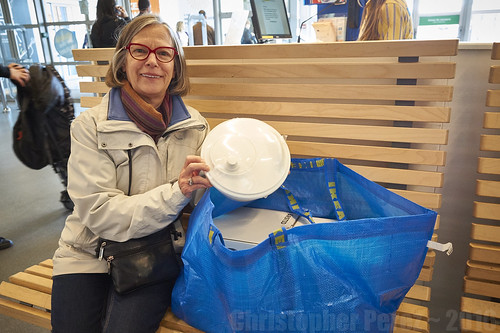
[A whole series of smashingly wonderful photos of our adventure can be found here - including scenes from the yet to be described Petting Zoo!]
It seems that the French deployed an army union to strike back at unwanted forces. They have been found to be an effective deterrent against invading hoards. When the armies of transportation union strike, flights and trains and all manner of oxen and donkey cart travel grinds to a halt. No one comes in. No one leaves. As in the best Monty Python skits, the tactic appears to be that without efficient transportation into a country, invasions can be thwarted and invading tourist armies simply give up and wander off in some other direction.

As you are no doubt aware, Europe is rich in histories of invasion/counter-invasion.
Take the Northmen, for instance. For hundreds of years boats loaded with armies from the north sailed and floated and swam toward Paris. Already famous the (old) world over for it's wine, women, and song, Paris was a somewhat attractive tourist destination. For hundreds of years, the Vikings visited and toured (or as the French would say; raped, plundered, and pillaged) the Christian monastery of Saint Germain situated just outside the massive fortified Paris village walls.
When the Northmen/Normans/Normands (depending on the written language) finished their visit of Parisian monasteries, they settled in a city called Rouen which is a broad region that would much later be called Normandy (who dreams up these names?). There they built their own Christian religious structures, including churches, pubs, and a few homes.
We were there once with friends from England to verify the current state of a family plot. Rouen, as readers will easily remember, was the seat of Northmen/Norman/Normand Power and is where Jude's great-great-great... grand-dad is buried. His is the natty little resting place found just behind the altar. So strong were these religious edifices that it took repeated American air-strikes to bring down just the cathedral bell tower. The Americans, it seems, were short of Jude's great-great-great... grand-dad Peppin Bref's tomb by hundreds of meters.

So it was with a sense of deep familial pride that we were found immersing ourselves into Yet Another Experience of a Lifetime. Paris, of all places, is home to a Viking Museum of Invasion History.
The Immersive Experience began by emulating the Northmen's spirit of boating tourist adventure. We navigated a bus toward the museum. It was easy to feel the Spirit of Adventure and to envision strong, tall, flaxen haired maidens passing down rows of strong, tall, flaxen haired gentlemen while dispensing Strong Drink to help weather the long voyage. The tradition holds, even today, where Stewards and Stewardesses pass amongst aircraft-swaddled passengers dispensing Weak Drink (yes, it seems that history has been watered down in more than one way).
We could see why the Vikings liked to travel. Our destination was a Glorious Museum. It was built strong, tall, and had painted blue (which signifies the seas they crossed in Olden Tymes) and swaths of yellow (which no-doubt emulates the flaxen haired-ness of the people who's lives the museum celebrates).

I will keep any description of the museum itself to a bare minimum so as to not disclose some of the surprising, wonderful discoveries found therein. But to give readers of taste of the complex, rich, nuanced historic details to be unearthed I feel the need to share two things.
The First Minor Sharing I'd like to make involves fish. Even under-educated, dare I say disinterested, readers of Viking history will recall that ravens used to follow Northmen wherever they went. Ravens were taken as a sign that the God Odin loved them and would treat them well. Odin and his ravens pointed the way to Paris wine, Paris women, and Paris song. So he's not a Bad God to have on one's side and the Northmen loved him dearly.

What we didn't know was that salmon also followed the Northmen on their journeys. This is why paintings of schools of salmon could be found as a backdrop to a particularly interesting diorama. While I don't recall the name of the God of Salmon, we learned that His influence is worldwide. These Great Fish were believed to follow the Vikings wherever they sailed. Even today salmon revered in countries as far away as Japan. It is there that salmon is a Most Important Partner to rice and is called Sushi. In Rouen, Normandy we call it Salmon Dinner.
The Second Minor Sharing I'd like to make involves light. You see, the Northmen liked to travel at night, or so said the plaque next to a display. It seems they needed a way to, well, Find Their Way without making a tangled flaxen-haired black-feathered mess when they collided with their all black as the darkest night and closely following raven pets. For hundreds of years no one could see a thing and made frustratingly slow progress.
A most significant Pride of the North has got to be the development of Beautiful Lighting Structures that ward off the after sun-down darkness. The shape and form of each structure is incredible. The creativity and artfulness has to be seen to be believed. Each shape, each nuance mean something. Each detail refers back to Something Really Important in their system of beliefs. The Northmen Called it Good - Yea Oden! We can See the Light!! And make our way to Paris!!! While avoiding the erratic flights of Our Raven Pets!!! Today we call them lamps.

All museums seem to have their Gift Shops and the Viking Museum of Invasion History is no different. So to celebrate our new understanding and appreciation of Northmen History we enjoyed a salmon lunch. Continuing our celebration of New Found Knowledge we picked up a pair of souvenir lamps that we couldn't live without. For us these will help illuminate those dark corners of our apartment where Scary Things, no ravens, might live. The Icing on the Cake was a salad spinner that was on sale. Don't ask us. The significance of lettuce spinning to the Northmen is lost to the Trysts of Thyme. Still, it was a Must Have.
In summary, the Northmen gave the world many wonderful things. They gave us salmon for dinner, and lights to see one's ravens by after le coucher du soleil. My wife's ancestors gave us the Spirit of Travel and Adventure, and they showed the way to decent in-flight drink service.
For the French they want to say they've learned from their early tourist invasion mistakes and have now staffed and fully deployed armies of transportation union members who can strike at any time, effectively shutting down any invading tourist force. Our trip from Lisbon to home should've taken 3 hours door to door, but ended up extending to over 8 hours. We think there's still a leak in the French tourist invasion defense system. Perhaps their armies of highly trained transport unionists could use further education on how to strike hard and strike deep?

No comments:
Post a Comment